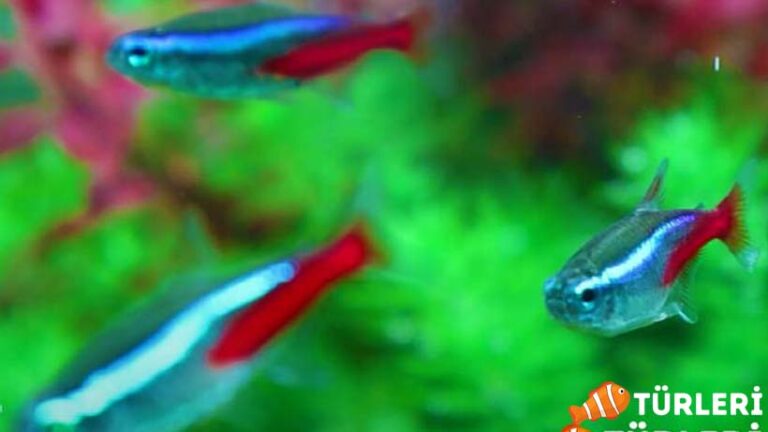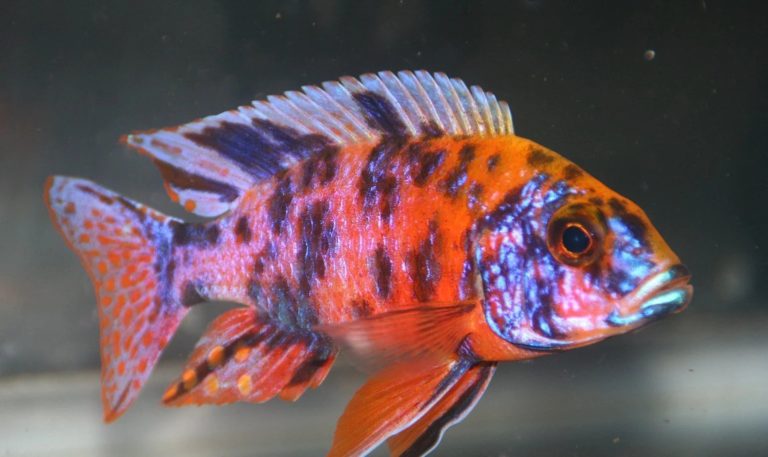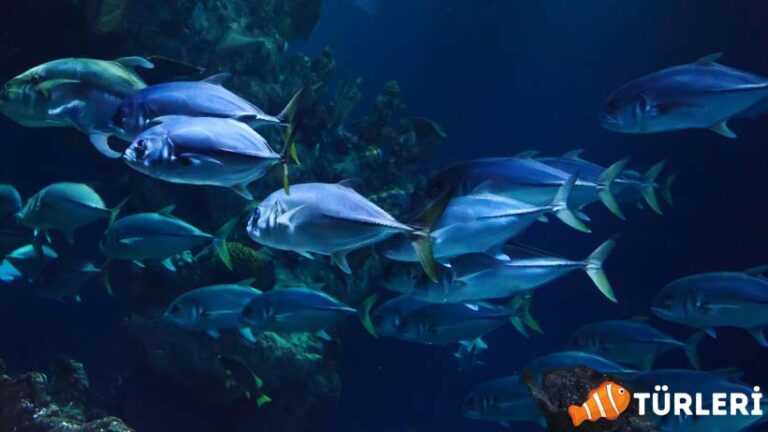Harlequin Shark
Harlequin sharks (Heterodontus francisci), also known as horn sharks, are interesting creatures that are popular among advanced aquarium enthusiasts. Their unique appearance and behavior make them a desired species for large home aquariums, but they require specialized care to thrive. Here’s a guide to caring for harlequin sharks:
Harlequin Shark Species Summary:
| Scientific Name: | Heterodontus francisci (Note: This is for the horn shark, which is sometimes confused with “harlequin sharks”. The true harlequin shark is Halaelurus quagga, but for the purpose of this answer, I’m using Heterodontus francisci as the reference.) |
| Origin: | Coastal waters of the eastern Pacific, from California to the Gulf of California in Mexico. |
| Diet: | Carnivore (primarily feeds on invertebrates, small fishes, and sea urchins). |
| Behavior: | Nocturnal, generally peaceful but can be defensive. |
| Behavior Towards Their Own Species: | Solitary; might be aggressive if kept with other individuals of the same species. |
| Swimming Zone: | Bottom |
| Water Temperature: | 15 – 24 °C |
| Water Hardness: | Generally adaptable, but maintaining marine conditions with a specific gravity of around 1.020-1.025 is essential |
| pH Level: | 8.0 – 8.4 |
| Minimum Aquarium Volume: | Roughly 700 Liters (for a single individual), but larger is always better |
| Adult Size: | Up to about 1 meter in length, but commonly around 60-70 cm in captivity. |
| Reproduction: | Oviparous, laying spiral-shaped eggs which are anchored to substrates. |
| Lifespan: | Can live up to 25 years in the wild with proper conditions. In captivity, lifespan can be somewhat shorter due to various factors. |
| Care: | Advanced, given their size and specialized requirements. Proper filtration, tank size, and environmental enrichment are crucial. |
Tank Size and Environment for Harlequin Sharks
- Tank Size: Harlequin sharks, also known by their scientific name Heterodontus francisci, are impressive marine creatures that can grow up to 3 feet (1 meter) in length. When considering an aquarium for this species, size is of paramount importance. A tank that holds a minimum of 180-200 gallons is the bare minimum required, but as with most marine species, bigger is almost always better. A larger volume provides the shark with ample space to swim and turn, reduces stress, and creates a more stable aquatic environment.
- Substrate: Mimicking their natural habitat is essential for their well-being. In the wild, Harlequin sharks are accustomed to sandy ocean floors. Hence, in a captive environment, a sandy substrate is recommended. Not only does it mirror their natural surroundings, but it’s also gentle on their delicate undersides. The soft nature of the sand prevents injuries and abrasions to their belly, which can occur if the shark rests or moves over rough or gravelly surfaces.
- Decor: Harlequin sharks are known to be somewhat shy and reclusive. Providing them with a proper environment that includes hiding spots is vital for their well-being. Creating an underwater landscape with rock formations, caves, and overhangs is beneficial for the shark. This allows them to retreat and feel secure, mimicking crevices and hideouts they would find in their natural habitats. When selecting or arranging decorations, one must be careful. Sharp-edged objects or poorly secured decorations could pose a risk to the shark. It’s important to ensure that all decorations are smooth, stable, and free from sharp protrusions. This minimizes the risk of the shark injuring itself as it explores or seeks shelter.
Additionally, the use of live rocks can be beneficial. Not only do they provide natural filtration and beneficial bacteria, but they can also serve as a source of natural food, harboring small organisms the shark might snack on.
Water Parameters for Harlequin Sharks
- Temperature: Harlequin sharks thrive in waters with temperatures ranging from 65°F to 70°F (18°C to 21°C). Maintaining this temperature range is essential for their metabolism and overall health. Sudden fluctuations or extremes outside this range can cause stress or even harm to the shark. It’s wise to invest in a reliable and high-quality aquarium heater, as well as a thermometer to consistently monitor the temperature. Remember, consistency is as important as the correct temperature range.
- Salinity: These sharks are native to marine environments, so replicating the salinity of the ocean is crucial. A specific gravity of 1.020-1.025 is recommended, mirroring full marine salinity. Consistent checks with a refractometer can ensure the salinity remains stable. It’s also worth noting that while setting up the tank and during water changes, using reverse osmosis (RO) water mixed with a high-quality marine salt is ideal to achieve the desired salinity and ensure the removal of potential contaminants.
- pH: A pH level of 8.0-8.4 is suitable for Harlequin sharks. This slightly alkaline range is representative of their natural marine habitat. To keep pH levels stable, regular monitoring using a pH meter or test kits is essential. If adjustments are needed, ensure that they are done gradually, using proper marine aquarium products to avoid shocking or stressing the shark.
- Filtration & Water Quality: Given the size and dietary habits of Harlequin sharks, they produce a significant amount of waste. A robust and efficient filtration system is non-negotiable. Mechanical, chemical, and biological filtration should all be incorporated to maintain clear, clean water and break down waste products effectively.
- Mechanical Filtration: Helps in physically removing debris and particulates from the water.Chemical Filtration: Typically involves activated carbon or other resins that remove dissolved impurities, odors, and discolorations.Biological Filtration: Relies on beneficial bacteria to break down toxic ammonia and nitrite, products of fish waste and uneaten food, into less harmful nitrate.
Dietary Needs of Harlequin Sharks
- Natural Diet: Harlequin sharks, in their native habitats, predominantly adopt a carnivorous diet. They prowl the seabed and crevices, preying mainly on invertebrates, smaller fish species, and, occasionally, sea urchins. Their feeding habits are influenced by their immediate environment and the availability of prey. The versatility in their diet reflects their adaptability to the varying food sources found in different habitats.
- Varied Diet in Captivity: To replicate the nutritional balance of their natural diet, it’s vital to offer Harlequin sharks a varied menu in captivity. A mix of meaty offerings is essential:
- Squid: This can be a staple in their diet, providing essential proteins and fats. It’s best to offer them cleaned and portioned pieces.
- Shrimp: Both freshwater and marine varieties can be given, but ensure they are of appropriate size and devoid of any additives or preservatives.
- Clam: Clams, whether on the shell or off, are a rich source of minerals and vitamins. They can be occasionally added to their feeding regimen.
- Fish: Offer them small, oily fish like sardines or mackerel which are packed with omega-3 fatty acids. However, avoid fatty fish as a daily diet, as it can lead to a vitamin E deficiency in the long run.
- Specialized Shark Pellets: These are formulated to provide a balanced diet for carnivorous sharks. They can be a great supplement to fresh foods and ensure the sharks receive all necessary nutrients.
- Occasional Algae Intake: Some Harlequin sharks may occasionally graze on marine algae. While it’s not a primary food source, having some natural algae in the tank can offer additional grazing opportunities and diversify their diet.
- Feeding Frequency and Portion Control: Harlequin sharks don’t need to eat daily. Feeding them 2-3 times a week is generally adequate. However, the portion size and the shark’s behavior are essential indicators to ensure they’re receiving enough nutrition. Overfeeding can lead to water quality issues and obesity in the shark, so it’s crucial to strike a balance. Watching the shark’s behavior, growth, and body condition can help adjust feeding amounts as needed.
- Feeding Technique: Given their natural hunting instincts, occasionally introducing live foods or using feeding tongs to simulate moving prey can stimulate the shark, encouraging its natural predatory behavior.
Choosing Tankmates for Harlequin Sharks
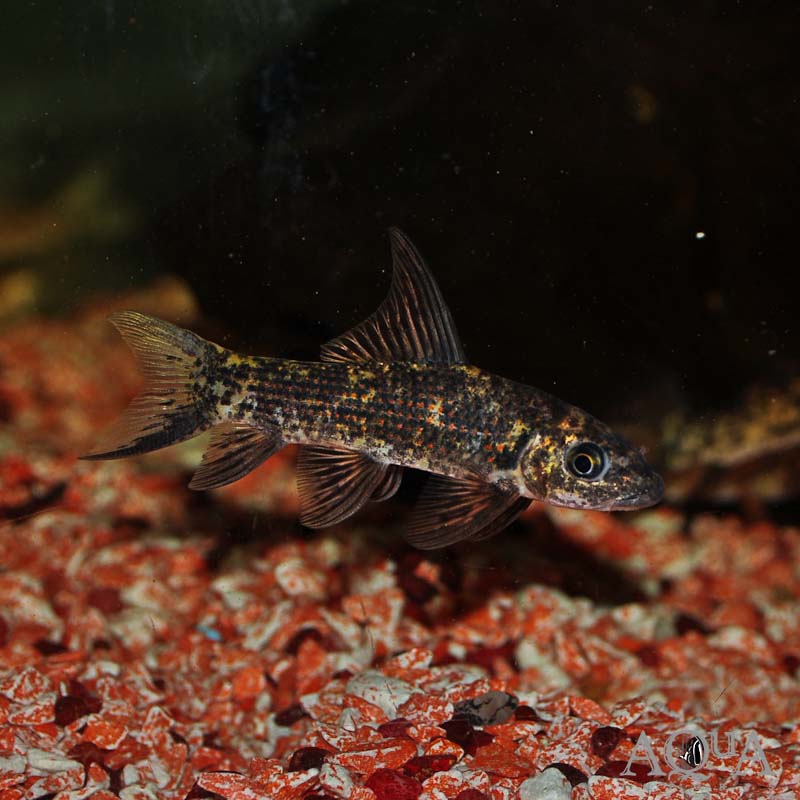
- Predatory Instincts: Harlequin sharks, being carnivorous, have ingrained predatory behaviors. In a contained environment like an aquarium, these instincts can manifest towards any potential prey, especially smaller, more vulnerable species. Understanding and respecting these instincts is paramount when deciding on tankmates.
- Larger, Robust Species: The best tankmates for Harlequin sharks are often other larger fish that can hold their ground and won’t be seen as potential prey. Fish such as groupers, larger wrasses, or lionfish might coexist without issues. That said, it’s crucial to ensure that these potential tankmates are also non-aggressive to prevent interspecies conflicts.
- Avoid Small Prey-like Species: Given the Harlequin shark’s predatory nature, smaller fish or invertebrates, including many popular marine aquarium species, might not be safe. Fish that are quick or have a darting motion can especially trigger predatory responses. Similarly, ornamental crustaceans, like shrimp or crabs, could easily become an unintended snack.
- Other Sharks: While it might be tempting to keep multiple sharks in one tank, it’s essential to remember that many shark species, including the Harlequin, can be territorial. Introducing another shark, especially of the same species, might lead to territorial disputes or aggression.
- Tank Decor and Environment: While this doesn’t directly relate to tankmates, the tank environment plays a crucial role in mediating interactions. The presence of ample hiding spots, caves, and territories can help reduce stress and potential confrontations.
- Monitoring and Adjustments: Even with careful selection, unexpected behaviors or interactions might arise. It’s essential to keep a keen eye on the tank, especially during the initial days after introducing a new tankmate. Look out for signs of stress, aggression, or injuries. If issues arise, be prepared to separate the offending parties or make adjustments to the tank setup.
- Quarantine: Before introducing any new tankmate, it’s a good practice to quarantine them. This not only helps ensure they are disease-free but can also give them time to acclimatize to the new environment gradually.
Handling & Behavior of Harlequin Sharks
- Nocturnal Nature: Harlequin sharks have evolved to be primarily nocturnal creatures. This means that during the day, they might often be found resting or hiding in secluded parts of the tank, such as caves or behind rock formations. As dusk approaches and throughout the night, they become more active, exploring the tank, hunting, or foraging for food. Their nocturnal habits can be attributed to both predatory advantage and evading potential threats in the wild.
- Temperament: While Harlequin sharks aren’t typically aggressive hunters like some other shark species, they have their natural behaviors and defense mechanisms. They are, by nature, predators, but in a tank environment, they usually exhibit a more relaxed demeanor unless provoked.
- Defensive Behavior: If a Harlequin shark feels cornered, threatened, or stressed, it may exhibit defensive behaviors. This can include rapid movements, posturing, or even trying to bite if it feels there’s no escape. Keeping the aquarium environment calm, spacious, and free of potential stressors can help prevent these behaviors.
- Handling Precautions: Direct handling of Harlequin sharks – or any sharks for that matter – should be minimized. Their skin is covered in dermal denticles, which can be abrasive and lead to minor injuries if not approached with care.
- Use of Specialized Tools: If there’s a need to handle or move the shark (like during tank maintenance, medical treatments, or transfers), using specialized tools or equipment is recommended. Nets designed for larger fish or soft, padded grips can be used to gently maneuver the shark. In some cases, a container or partition might be more appropriate to temporarily segregate the shark.
- Stress Minimization: Handling can be stressful for the shark. It’s essential to ensure that any handling is done quickly, gently, and efficiently to reduce this stress. Before any procedures, ensure all necessary tools and setups are ready to minimize the duration of the handling.
- Human Safety: While Harlequin sharks aren’t known for aggression, they are still wild animals with the potential to defend themselves. Anytime you’re working in or around the tank, be mindful of the shark’s presence and behavior. If they exhibit signs of stress or agitation, give them space and approach with caution.
Breeding Harlequin Sharks

- Breeding Attempts in Captivity: The breeding of Harlequin sharks in a home aquarium setting is a rarity. The reasons for the difficulty range from the need for a proper environment to the intricacies of shark mating behaviors. Only advanced hobbyists or institutions with ample resources and space usually consider such attempts.
- Oviparous Reproduction: Harlequin sharks, being oviparous, lay eggs instead of giving birth to live young. These eggs are often encased in a protective shell, commonly referred to as a “mermaid’s purse.” Each of these purses contains one or sometimes more embryos.
- Egg Casing: The spiral or twisted shape of the Harlequin shark’s egg casing is distinct and serves a purpose. The spiral design helps anchor the egg to the substrate, ensuring it doesn’t drift away with the water current. Inside this casing, the embryo develops, receiving nourishment from the yolk sac.
- Mating Behavior: Before laying eggs, there’s, of course, the act of mating. Shark mating often involves the male biting the female to hold her during copulation. This behavior, while natural, can appear aggressive and can result in visible injuries to the female’s body. It’s vital to monitor these interactions closely in captivity to ensure the female’s safety.
- Incubation Period: Once the eggs are laid and attached to a substrate, they require a specific duration for incubation. During this period, the embryo develops inside the casing. The exact duration can vary depending on species, water temperature, and other factors.
- Egg Maintenance: In captivity, it may be beneficial to move the egg casings to a separate tank or protected area to safeguard them from potential predators, including other fish or even the parent sharks themselves. This separate environment should have stable water parameters and gentle water flow.
- Hatchlings: Once the embryos are fully developed, young sharks emerge from the casings. These juvenile sharks will need a specialized environment with ample hiding spots and a diet tailored for their growth.
- Conservation Note: In some parts of the world, the populations of various shark species, including Harlequins, are under threat due to overfishing, habitat destruction, and other human-induced factors. If attempting to breed, one should always be informed about the conservation status and potential ethical considerations of breeding a species.
Health Monitoring and Care for Harlequin Sharks
- Observation: One of the most effective ways to assess the health of your Harlequin shark is through consistent observation. Changes in behavior, appearance, or habits can often be the first indication of potential health issues.
- Irregular Behaviors: While occasional variations in behavior can be normal, persistent or drastic changes may be cause for concern. This includes:
- Prolonged lethargy or listlessness.
- Rapid or labored breathing.
- Scratching against surfaces, indicating potential skin irritations or parasites.
- Persistent hiding or withdrawal from usual active areas.
- Appetite and Feeding: A sudden refusal to eat or a diminished appetite can be an early sign of health issues. However, occasional fasting or changes in feeding habits can be normal. It’s the prolonged refusal or irregularities that warrant attention.
- Physical Indications: Visible signs on the shark’s body can indicate various health problems:
- Spots, lesions, or discolorations may signal skin infections, parasites, or injuries.
- Swollen or protruding eyes.
- Abnormal growths or lumps.
- Damaged or eroding fins.
- Parasites and Diseases: Like all marine creatures, Harlequin sharks can be vulnerable to a variety of parasites and illnesses. Common marine ailments include:
- Ich (white spot disease): Appears as tiny white dots across the body and fins.
- Velvet disease: Gives the fish a dusty or velvety appearance.
- Fin rot: Characterized by fraying or decay of the fins.
- Internal parasites: May cause weight loss, swollen abdomen, or irregular excrement.
- Preventative Measures: Prevention is often more effective than treatment when it comes to aquatic health.
- Quarantine: Always quarantine new tank additions for several weeks to ensure they are not carrying diseases or parasites that could be introduced to the main tank.
- Water Quality: Ensure optimal water parameters, as fluctuating or poor conditions can stress marine life, making them more susceptible to diseases. Regular testing and water changes are essential.
- Diet: Providing a varied, balanced diet ensures that the shark receives all necessary nutrients, boosting its immune system.
- Consultation: If you notice any persistent or severe health issues, it’s wise to consult with a marine veterinarian or an expert in shark care. Early intervention can make a difference in treatment success.
Conservation & Ethics of Harlequin Sharks
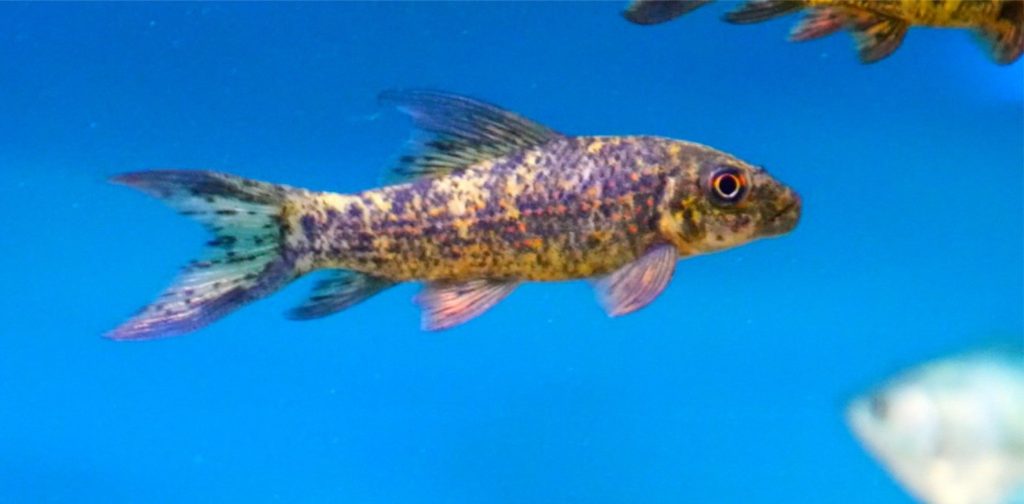
- Environmental Impact: The removal of species from their natural habitats, especially apex predators like sharks, can disrupt local ecosystems. Each species plays a specific role in its environment, and extracting significant numbers can lead to imbalances, affecting biodiversity and the health of the ecosystem.
- Ethical Sourcing: Aspiring keepers should conduct thorough research on suppliers and their sourcing practices. It’s crucial to support businesses and breeders that prioritize sustainable and ethical practices. Ask questions about the origins of the shark and the methods used to capture or breed them.
- Tank-bred vs. Wild-caught: While tank-bred species are always the preferable choice due to their lesser impact on wild populations, it’s acknowledged that tank-bred Harlequin sharks are rare. If considering a wild-caught individual, it becomes even more vital to ensure that it was sourced sustainably.
- Trade Regulations: Some species of sharks, though not necessarily the Harlequin, might be protected under international conventions or local laws. Always ensure that the trade, transport, and possession of any marine species complies with all legal guidelines.
- Shark Welfare: Harlequin sharks, like all sharks, have evolved over millions of years to fit their specific ecological niche. Replicating the vast open ocean or specific habitats in a home aquarium is challenging. Potential keepers need to be aware of the environmental and psychological needs of the shark and be equipped to meet them.
- Long-Term Commitment: Sharks can live for many years, even decades, in captivity with proper care. Anyone considering keeping a shark should be prepared for a long-term commitment, both in terms of time and financial resources. This is not a venture for the casual hobbyist.
- Education & Awareness: If you’re passionate about marine life, use your interest as a platform to educate others. Sharing knowledge about the challenges sharks face in the wild, such as overfishing, habitat destruction, and climate change, can help raise awareness and foster more responsible behaviors in others.
- Conservation Initiatives: Consider supporting conservation organizations that work to protect marine habitats and promote sustainable fishing practices. Even if you don’t keep a shark, these groups play a crucial role in safeguarding the future of marine species.
The Harlequin shark, like all marine species, stands as a testament to the marvels of aquatic life and the delicate balance of oceanic ecosystems. While its enigmatic behavior and striking appearance make it an enticing choice for advanced aquarium hobbyists, the responsibility attached to its care is significant. The decision to house such a creature goes beyond mere aesthetics and pet ownership; it’s a commitment to the preservation and respect of a species.
Sourcing ethically, understanding the intricate care requirements, and considering the long-term implications are non-negotiable aspects for any prospective keeper. Additionally, it offers an opportunity: to become ambassadors for marine conservation. By keeping and showcasing such species responsibly, individuals can raise awareness about the broader challenges faced by marine life in the wild.
In essence, whether one decides to keep a Harlequin shark or simply admire them from afar, the underlying principle remains the same: a call for understanding, respect, and proactive efforts towards conservation. In an ever-evolving world, where natural habitats face increasing threats, every choice we make can contribute to a sustainable and harmonious coexistence with the wonders of the deep.


